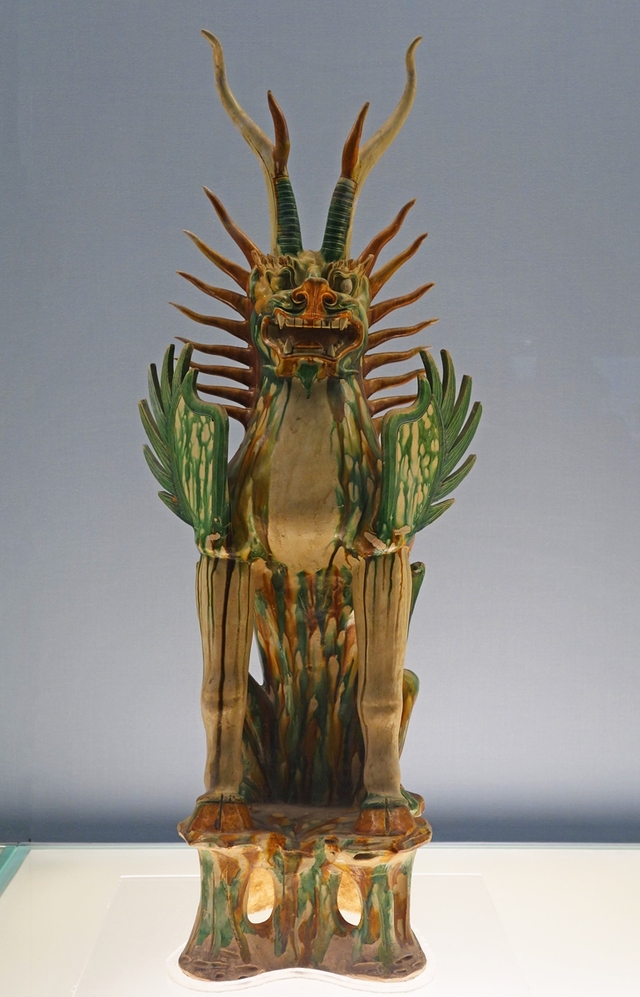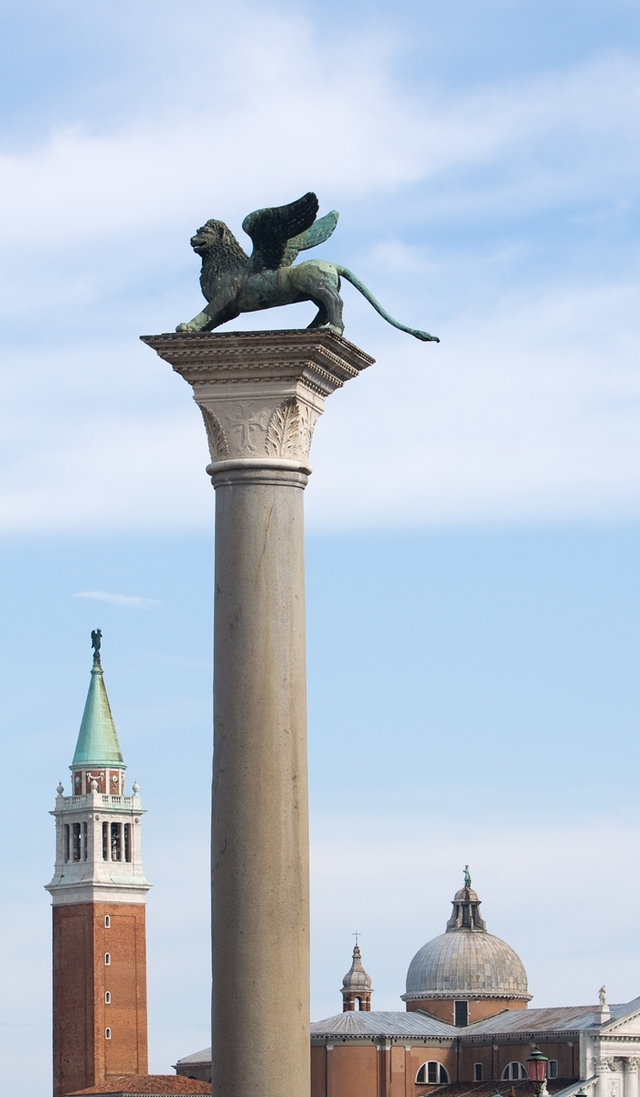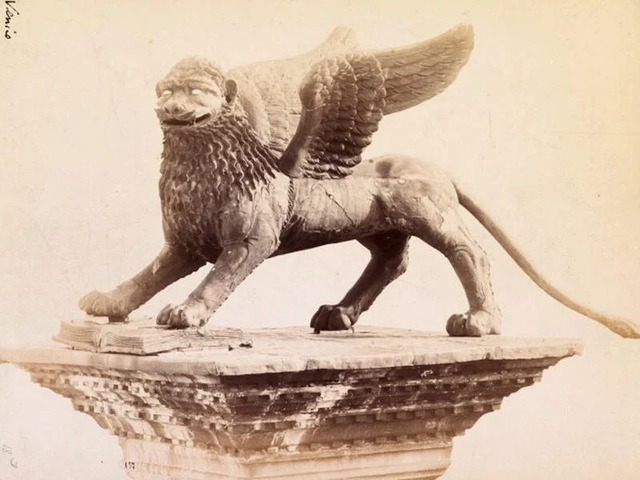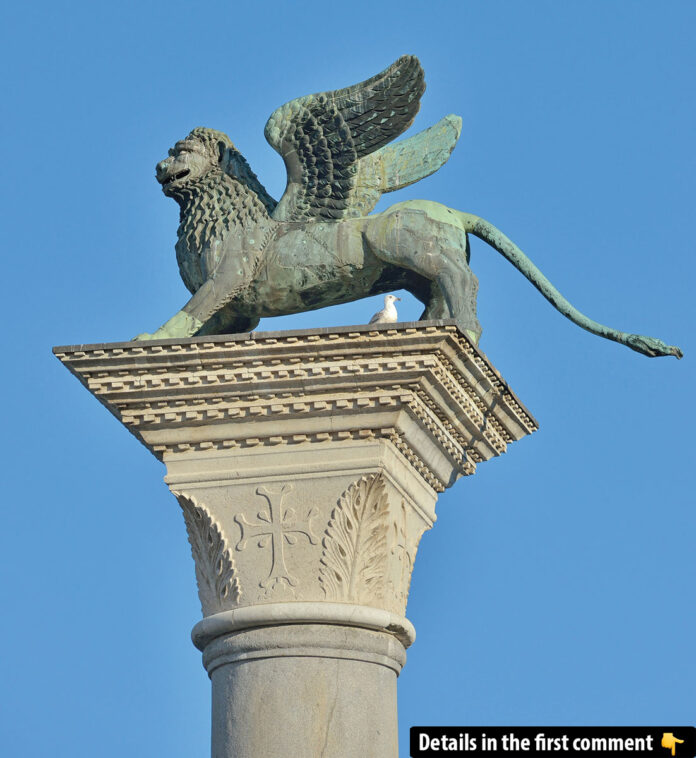In the heart of Venice’s iconic Piazza San Marco stands the Lion of St. Mark, a symbol of Venetian pride and power. Long thought to be a purely European creation, recent scientific discoveries have revealed a surprising origin for this majestic statue. Isotopic analysis and stylistic studies now suggest that the lion may have originated in 8th-century China during the Tang Dynasty. This groundbreaking revelation not only challenges long-held assumptions about the statue but also underscores the deep cultural exchanges facilitated by the ancient Silk Road.
The Lion of St. Mark: A Venetian Icon
For centuries, the bronze-winged lion atop its column in St. Mark’s Square has been a cornerstone of Venetian identity. Representing St. Mark the Evangelist, the patron saint of Venice, the statue is more than just an emblem of the city—it’s a beacon of its maritime history, trading prowess, and cultural grandeur. Yet, for all its symbolic significance, the lion’s origins have long been shrouded in mystery. Earlier theories proposed Hellenistic or Mediterranean roots, but no concrete evidence had ever settled the debate.
The Tang Dynasty Connection: A New Revelation

Recent research by a multidisciplinary team of archaeologists, chemists, and art historians from the University of Padua and Ca’ Foscari University of Venice has rewritten the lion’s history. Using lead isotope analysis, the team traced the bronze material to the lower Yangtze River basin in southeastern China, a region central to the Tang Dynasty’s artistic and metallurgical achievements.

Stylistic analysis further supports this conclusion. The lion’s facial features—bulbous nostrils, a grinning mouth with prominent canines, and truncated orbital sockets—mirror those of zhenmushou, or Chinese tomb guardian statues, common during the Tang period. These statues were traditionally placed at tomb gates to ward off evil spirits, making their resemblance to the St. Mark’s lion all the more intriguing.

Video
Discover the rich history of Saint Mark’s Basilica in this summarized video – watch to learn about the iconic architecture and historical significance of this Venetian masterpiece!
The Lion’s Long Journey: From China to Venice
How did a Chinese tomb guardian find its way to Venice? The answer likely lies in the ancient Silk Road, the vast network of trade routes connecting East and West. Experts suggest that the lion may have traveled westward through India, Afghanistan, and Iran before reaching Venice. It could have arrived in pieces, later reassembled and modified to fit the Venetian iconography of a winged lion.
While historical records remain scarce, some speculate that the lion may have been brought to Venice by Marco Polo’s father and uncle, who visited Beijing between 1264 and 1266. However, the lion’s first documented presence in Venice dates back to 1293, predating Marco Polo’s return from China by two years. This timeline hints at an even earlier arrival, possibly during heightened trade along the Silk Road.

A Testament to Cultural Exchange
The lion’s transformation from a Chinese tomb guardian to a Venetian symbol is a testament to the rich cultural exchanges of the medieval world. Modifications to the statue—such as the addition of wings and alterations to its ears—helped align it with Venetian iconography. These changes highlight how artifacts can serve as bridges between cultures, carrying elements of their origins while adapting to new contexts.
This discovery also underscores Venice’s historical role as a crossroads of civilizations. As a major hub of trade and diplomacy, the city has long been a melting pot of ideas, goods, and artistic influences from across the globe.
The Science Behind the Discovery
At the heart of this revelation lies cutting-edge scientific analysis. Lead isotope testing, a technique used to trace the geographic origin of materials, revealed a unique isotopic signature linking the lion’s bronze to Chinese mines in the lower Yangtze River basin. This method is akin to DNA analysis, providing a “fingerprint” for the metal that confirms its origin with remarkable accuracy.
The study also incorporated stylistic comparisons, drawing parallels between the lion and Tang Dynasty artifacts. While stylistic evidence can be subjective, the combination of scientific and artistic analysis provides a compelling case for the lion’s Chinese roots.
The Lion’s Tumultuous History
Over the centuries, the Lion of St. Mark has endured its share of challenges. In the 1790s, Napoleon looted the statue and transported it to Paris, only for it to sustain damage during its return to Venice in 1815. Venetian sculptor Bartolomeo Ferrari restored the lion, adding elements like the lead book beneath its paws while preserving much of the original structure.
These restorations, combined with centuries of wear and tear, have obscured some of the lion’s original features. Yet, even in its modified state, the statue remains a powerful symbol of Venice’s resilience and cultural heritage.
Unanswered Questions and Future Research
Despite these groundbreaking findings, many mysteries remain. When exactly did the lion arrive in Venice? Who facilitated its journey? And why was it chosen to represent St. Mark? Scholars hope to answer these questions through further interdisciplinary research, potentially in collaboration with Chinese experts.
The lion’s story is also a reminder of the importance of preserving cultural artifacts. As new technologies emerge, they offer the potential to uncover hidden histories, deepening our understanding of the past and its connections to the present.
Conclusion
The discovery that the Lion of St. Mark may have originated in 8th-century China is a striking example of how interconnected our world has always been. Far from diminishing its significance, this revelation enriches the lion’s legacy, transforming it from a local emblem to a global symbol of cultural exchange.
Standing proudly in St. Mark’s Square, the lion now carries a story that transcends borders and centuries, reminding us of the shared history that binds humanity together. As research continues, it will undoubtedly unveil even more layers of this extraordinary artifact’s journey—a journey that began in the Tang Dynasty and continues to captivate us today.
